
This story originally appeared on SmartAsset.com.
Bureau of Labor Statistics data shows that there are about 33.6 million families in the U.S. with children under the age of 18. In 2018, at least one parent was employed in almost 91% of those family households.
Among the smaller subset of married-couple families with children, about 97% had at least one working parent and 63% had two working parents.
Although job insecurity and shifting ways of life and work are a new reality for many households across America due to the spread of COVID-19, there are essential workers and others whose offices have opened up who must report to work and also make sure their children are taken care of.
Balancing the demands and costs of child care and a job outside of the house is no simple task, but some cities may offer more favorable conditions for working parents than others. That’s why SmartAsset decided to explore some of the best cities for working parents in America.
To do this, we considered a total of 581 cities and examined data on them across eight metrics, which span topics including, housing, safety and education. Click through to examine how we did it, followed by the results.
Data and methodology

SmartAsset created this list of the best cities for working parents by looking at the 600 largest cities in the U.S. Of those cities, 581 had complete data across the following eight metrics:
- Median household income
- Median annual housing costs
- Percentage of the workforce working 50 or more weeks per year: This is the share of the population between the ages of 16 and 64 who work between 50 and 52 weeks per year.
- Average commute time: This is the average number of minutes it takes to get to work.
- Violent crime rate: This is the number of violent crimes per 100,000 residents. Data comes from the FBI Uniform Crime Reporting Program and is for 2018. We used data from Neighborhood Scout if FBI data was not available.
- High school graduation rate: Data comes from the 2019 County Health Rankings, a program of the Robert Wood Johnson Foundation and the Wisconsin Population Health Institute.
- State family leave policy rating: This is a state-by-state ranking that reflects the degree to which each state improves upon federal law concerning paid or unpaid workplace leave. Data comes from the National Partnership for Women and Families’ report on working family caregivers and is for 2018.
- Average annual child care costs: This is the weighted average of the average annual cost of care for an infant and the average annual cost of care a 4-year-old in each state. Data comes from the Economic Policy Institute.
Data came from the U.S. Census Bureau’s 2018 one-year American Community Survey unless otherwise noted.
To create our final rankings, we ranked each of the 581 cities in every metric. We then found each city’s average ranking, giving each metric an equal weight. We used this average ranking to determine a final score. The city with the highest average ranking received a score of 100 and the city with the lowest average ranking received a score of 0.
It is important to note that in our previous version of this study, we additionally considered the metric of unemployment rates. We did not include that metric this year, as unemployment rates have changed so drastically during the coronavirus pandemic, and city-level figures for 2020 are not yet available.
10. Brownsville, Texas

Median annual housing costs: $8,028
Violent crime rate (crimes per 100,000 residents): 376
High school graduation rate: 91.20%
Average annual child care costs: $8,193
Brownsville, Texas, leads our list of the best cities for working parents. Though incomes are lower relative to other cities, housing costs are also low.
In 2018, the median annual household income was about $37,000, the lowest of any city in our top 10 and 23rd-lowest overall. However, median annual housing costs were $8,028, the fourth-lowest overall.
9. Provo, Utah

Median annual housing costs: $11,304
Violent crime rate (crimes per 100,000 residents): 175
High school graduation rate: 90.70%
Average annual child care costs: $8,796
Provo, the third-largest city in Utah by population, moved up from its ranking in last year’s study from 10th to ninth.
Paid time off for workers in Provo generally seems to be available. According to the Census Bureau, only about 46% of workers there worked 50 or more weeks per year in 2018, the 11th-lowest percentage for this metric across all 581 cities in the study.
Provo also ranks in the top fifth of cities for two other metrics: average commute time (18.8 minutes) and high school graduation rate (90.70%).
8. Laredo, Texas

Median annual housing costs: $10,392
Violent crime rate (crimes per 100,000 residents): 337
High school graduation rate: 91.30%
Average annual child care costs: $8,193
Laredo is second of four Texas cities that made it into our top 10.
Laredo ranks in the top fifth of the 581 cities in the study for three metrics: median annual housing costs ($10,392), high school graduation rate (91.30%) and average annual child care costs (less than $8,200).
Moreover, many parents may work in jobs that receive paid time off. In 2018, more than 54% of the workforce worked less than 50 weeks per year (i.e. had at least two weeks of vacation time).
7. Mission, Texas

Median annual housing costs: $9,060
Violent crime rate (crimes per 100,000 residents): 110
High school graduation rate: 88.40%
Average annual child care costs: $8,193
Mission, Texas, ranks the best for safety of any city in our top 10. In 2018, there were an estimated 110 violent crimes for every 100,000 residents, a rate that places Mission in the top 10th of our study for this metric.
Additionally, housing is relatively affordable in the city. The median annual housing costs in Mission are less than $9,100, according to 2018 Census Bureau data.
6. Edinburg, Texas
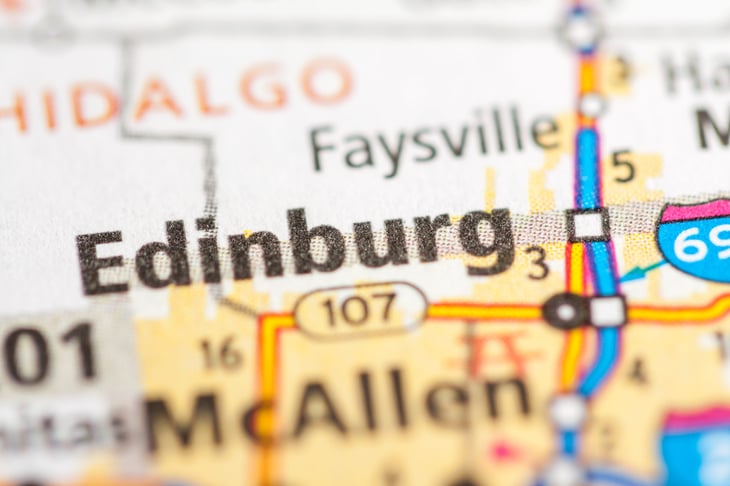
Median annual housing costs: $9,156
Violent crime rate (crimes per 100,000 residents): 329
High school graduation rate: 88.40%
Average annual childcare costs: $8,193
Edinburg, Texas, ranks as the sixth-best city for working parents in this year’s study, performing particularly well in terms of its low median annual housing costs ($9,156) and average commute time (16.5 minutes).
Edinburg additionally offers working parents the opportunity for affordable child care. Texas has the 14th-lowest average child care costs, at roughly $8,200, of any state or the District of Columbia.
5. Jonesboro, Arkansas
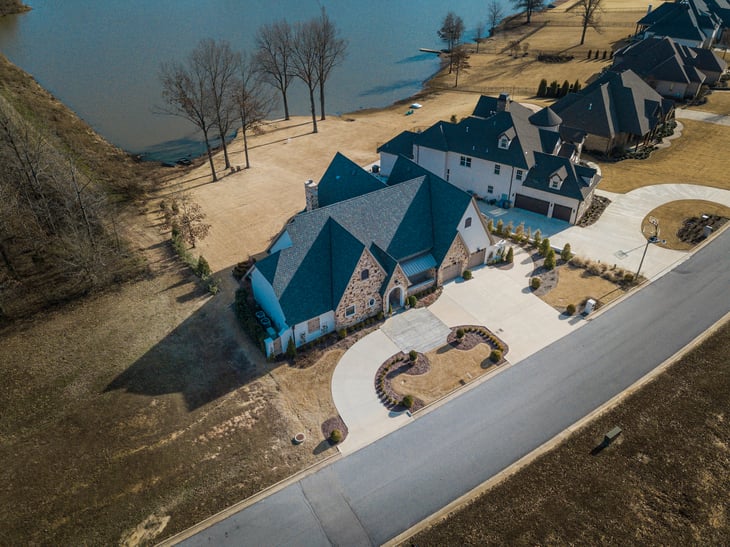
Median annual housing costs: $9,000
Violent crime rate (crimes per 100,000 residents): 551
High school graduation rate: 92.59%
Average annual child care costs: $6,184
Jonesboro, Arkansas, has the lowest median housing costs of any city in our top 10 and the 20th-lowest amount for this metric overall, with residents paying $9,000 annually on average.
While incomes fall behind other cities (the 2018 median annual income was $45,057), the area has a high graduation rate for high schoolers (about 93%).
Arkansas also has the third-lowest average child care costs of any state or the District of Columbia. Data from the Economic Policy Institute shows that the average annual costs of infant care and care for a 4-year-old in Arkansas total $6,890 ($574 every month) and $5,478 ($457 every month), respectively.
4. Bowling Green, Kentucky
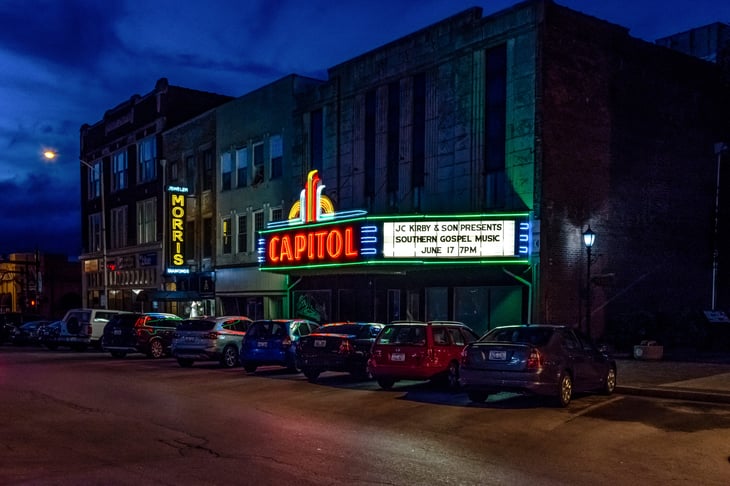
Median annual housing costs: $9,912
Violent crime rate (crimes per 100,000 residents): 305
High school graduation rate: 95.86%
Average annual child care costs: $6,411
Bowling Green, Kentucky, ranks in the top 25 cities for three metrics: average commute time, high school graduation rate and average annual child care costs.
Our data shows that the average commute for workers is less than 17 minutes, and the high school graduation rate in the area is close to 96%. Finally, the average annual cost of child care is less than $6,500 in the state of Kentucky.
3. Oshkosh, Wisconsin
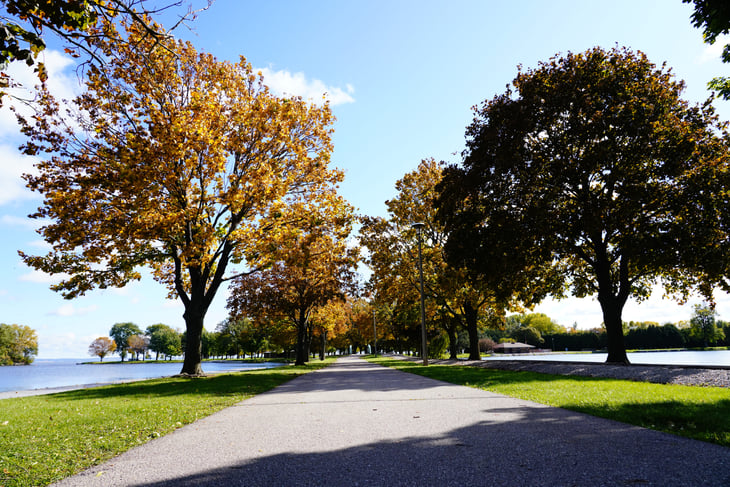
Median annual housing costs: $9,948
Violent crime rate (crimes per 100,000 residents): 172
High school graduation rate: 90.51%
Average annual child care costs: $11,382
Oshkosh, Wisconsin, ranks as the third-best city in the U.S. for working parents because of its low housing costs, short commute times and high graduation rate for high schoolers.
Census Bureau data from 2018 shows that the median annual housing cost for residents in the city was less than $10,000, and the average commute time for workers was about 17 minutes. According to the County Health Rankings, the high school graduation rate was nearly 91% in 2019.
2. Ames, Iowa
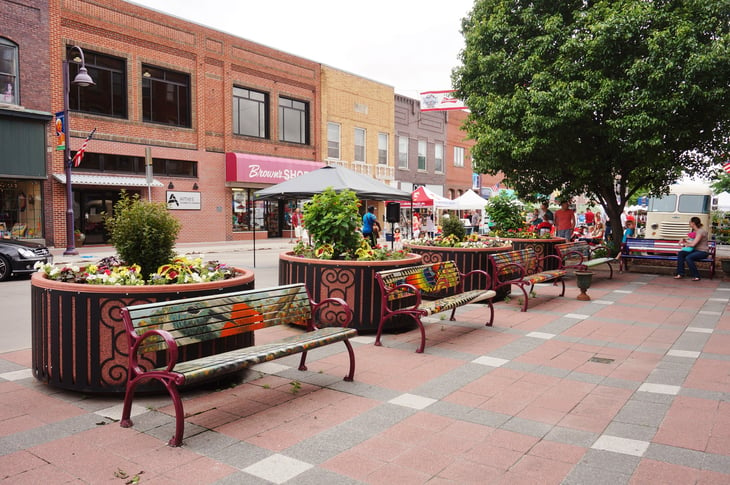
Median annual housing costs: $11,016
Violent crime rate (crimes per 100,000 residents): 183
High school graduation rate: 93.99%
Average annual child care costs: $9,506
Ames, Iowa, previously ranked as our top city for working parents in America. Data shows that parents may be better able to balance the demands of work and caring for a child due to shorter work hours and commutes.
Less than half of the Ames workforce worked 50 weeks or more in 2018, according to the Census Bureau. Additionally, the average commute for workers was 15.80 minutes, the 13th-lowest rate for this metric across all 581 cities in our study.
1. Wichita Falls, Texas

Median annual housing costs: $9,432
Violent crime rate (crimes per 100,000 residents): 369
High school graduation rate: 96.60%
Average annual child care costs: $8,193
Wichita Falls, Texas, ranks in the top eighth of cities in the study for five metrics: high school graduation rate, median annual housing costs, percentage of the labor force working 50 weeks or more per year, average commute time and average annual child care costs.
Part of Wichita County, it has the highest high school graduation rate (97%) of any city in our top 10 and the sixth-highest rate for this metric overall.
According to census data, in 2018, median annual housing costs were about $9,400, only about half of the labor force worked more than 50 weeks per year and the average commute for workers was roughly 15 minutes.
Finally, the state of Texas has the 14th-lowest average annual child care costs, at $8,193, of all 50 states and the District of Columbia.





Add a Comment
Our Policy: We welcome relevant and respectful comments in order to foster healthy and informative discussions. All other comments may be removed. Comments with links are automatically held for moderation.